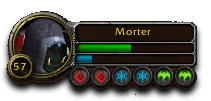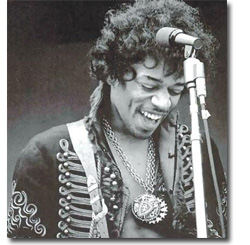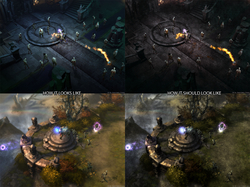 As the Wrath of the Lich King beta lives on, the world (and software behind it) is ever changing. Apparently, the rune system has changed a lot since its first inception. This requires a delicate balance, as the goal is a well rounded Death Knight class without epically overpowered features. Too much power and people will feel cheated while others feel overly destructive. End result, everyone would be a Death Knight.
As the Wrath of the Lich King beta lives on, the world (and software behind it) is ever changing. Apparently, the rune system has changed a lot since its first inception. This requires a delicate balance, as the goal is a well rounded Death Knight class without epically overpowered features. Too much power and people will feel cheated while others feel overly destructive. End result, everyone would be a Death Knight.
The rune system that Blizzard has created is more straight forward than the initial system because it contains less variables. The Death Knight has a secondary bar, much like a Warrior, that starts empty and slowly climbs with “Runic Power,” an energy generated when you cast spells and expend rune energy. It works much like the warrior class, as it builds it will open up some abilities in your bar that were “grayed out” because they couldn’t be cast yet.
What the heck is a rune? Above your character profile you’ll have six little circles, called runes, these little guys work much like the rogues energy. The three styles of runes are: Blood, Frost and Unholy runes and they’re coordinated with your spells and sword strike abilities much like a paladin or warrior. Each rune “goes dark” when you expend its energy – this limits your access to use the Death Knights abilities much like expending all your rogues energy stops the rogue from using their neat features. However, once its energy is expended, it will grow your runic power a slight bit, “charging” it for later use.
To remove any additional confusion with the runes, runic power and all that craziness, Blizzard was kind enough to color code it all neatly for us. Blood rune abilities are red while Frost abilities are blue and Unholy abilities are green. So, when you break down the abilities on the bar, you’ll have them neatly colored for you!
Each time you cast a spell or use a strike-style ability you’ll use a number of “runes” from your profile image; they’ll go dark, in essence, disabled until they recharge (like rogues energy). This gives you the ability to utilize, perhaps, two frost attacks and then fire off two unholy attacks and end with two blood attacks without every stopping or resting your combat. Usually, once you’ve expended all your runes, the first ones you utilized with be recharged and ready to use.
Looking at the abilities listed above, you can see the quick key-2 is purple… it doesn’t fit the scheme we just mentioned at all! This isn’t a rune ability, but an “instant” that’s cast and has a longer cool down than typical abilities. Quick key-5, in our example, is disabled because it uses runic power (like rage) and does not require any specific rune to utilize, it just build as you battle. You’ll find runic power abilities fairly powerful, thus, they’ve been limited in execution time.
Abilities that use runic power can have varying degrees of power depending on how much runic power you’ve “charged” or stored up in your bar; beware, like rage it will drain slowly when out of combat. Each rune ability will list its required number of runes to utilize it, initially your starter abilities will all be “1 blood” or “1 unholy” or “1 frost” to fire off, giving you two hits before you’ll be holding out for that specific style of rune to recharge.
In most of my game play, thus far, I’ve relied heavily on Frost runes because the talent system works in conjunction with the rune styles. You’ll have a blood talent tree, frost talent tree and unholy talent tree to pick abilities out of and mine are primarily frost, so I rely heavily on my two frost runes (the second pair in the profile bar.)
What do the runes focus on? The three classes of runes each have their own primary focus and goals. The blood runes are focused on melee striking style attacks while the frost fit better with a damage per second (DPS) spell caster style and unholy works more like a necromancer.
You can mix your styles or try to generalize across the board, which usually leads to watered down character. A necromancer casting role may be great for high DPS damage with the ability to take a few shots in the field of battle so you may choose frost/unholy, or blood/unholy for more of a semi-tank necromancer. Some of the unholy abilities require close combat to infect enemies with plagues and pestilences so it may pair well with blood in some situations.
Overall, the system allows for a great variety of class builds and usefulness. Choosing your talents is just as important as ever and their new rune system for the Death Knight gives you a virtual unending ability to cast spells while not being too overpowered or dependent on a specific class of rune. The runic power gives you more abilities to surprise your target with strategy and entices the Death Knight class to continue battle without running away.
Paired with the ability to raise dead and form small temporary legions of death (and the cool ass sword) makes this class a worthwhile addition to the World of Warcraft environment.


 In the race for best rock simulation, Activision has pulled out a legend and brought to their franchise. Jimi Hendrix will play a role as an in-game character along with a couple tracks you may have heard: Purple Haze and The Wind Cries Mary.
In the race for best rock simulation, Activision has pulled out a legend and brought to their franchise. Jimi Hendrix will play a role as an in-game character along with a couple tracks you may have heard: Purple Haze and The Wind Cries Mary. There has been many debates on the graphic level of Diablo 3 and how it should be different. Finally a developer comes out and says “um, no.” Their reasoning is fairly simple, it’s one thing to photoshop up a screenshot with some filters but it’s another to get the texture and lighting to run at that detail on a standard computer.
There has been many debates on the graphic level of Diablo 3 and how it should be different. Finally a developer comes out and says “um, no.” Their reasoning is fairly simple, it’s one thing to photoshop up a screenshot with some filters but it’s another to get the texture and lighting to run at that detail on a standard computer.